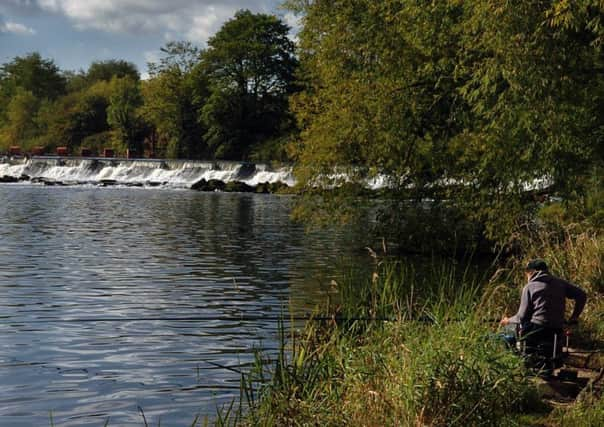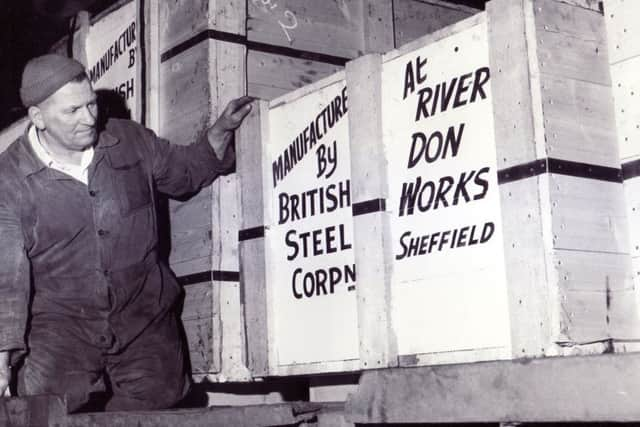River Don comes clean


There is a photograph of the River Don in the Sheffield Star dating from 1970 with flames coming off the surface of the water. The river is actually on fire. The factory walls which form the river’s boundary are black from where the flames have curled up at them before.
“When you looked into the water it was jet black,” says Stuart Crofts, then environmental campaigner and defender of the River Don in its dark days. “There was that much oil on top that it would literally burn.”
Advertisement
Hide AdAdvertisement
Hide AdIt is hard to believe we are talking about the same river that is now beginning to see its first spawning salmon and the return of migratory fish.


The clean up of our post-industrial rivers is one of the great environmental success stories of our times and it is local campaigners like Stuart that have often been driving this renaissance.
I spent an evening with a group of such people at an event organised by the Don Catchment Rivers Trust, in the Victorian splendour of St Catherine’s House in Doncaster. Community Engagement Officer, Rachel Walker, was launching a project to capture people’s river memories and make them available to download onto a smartphone that visitors can listen to when they follow a trail on the riverbank.
There are many ways to tell a story. One is via facts and figures, such as the percentage of nitrates and ammonia in the water and how these have changed over the decades, but Walker prefers to hear the community speak in its own voice and build a collective memory, a record of the river and how it has changed.
Advertisement
Hide AdAdvertisement
Hide Ad“It can be done in terms of statistics and water quality, yes,” she agrees, “But perhaps more interesting is people’s perceptions of it.”


True, you can find in textbooks the dry facts of how the formulae of detergents discharged into the river changed in the 1970s, but if you want to get an idea what it was really like before that, listen to Mick Reeve talk about his childhood bus rides into Doncaster in the 50s, when those detergents were churned up into giant foam balls that used to float down the rivers.
“The bus going over St Mary’s Bridge in winter would have foam from the river splattering all over the windows.” he recalls.
His wife, Liz, who has written a book on the Don, talks about her childhood growing up beside the river, and how it was drilled into kids that it was a dangerous place and not to go near it.
Advertisement
Hide AdAdvertisement
Hide Ad“In our cottages, we never had any water toilets or anything, we just had a bucket.” she says. “They used to come and empty them every week, then wash the buckets in the river. There was about 18 children in the lane at that time. They used to come from Mexborough and swim, but we never did – we knew what went in it!”
The main polluters of the River Don were the mining and steel industries, along with effluent from the sewage works.
The cleaning of the river was the result of a succession of environmental legislation following the Second World War, which had left the river practically dead.
But legislation alone is rarely enough. It was the campaigning zeal of locals like Stuart Crofts that really began to make a difference in the 1980s, when new legislation allowed the public to see what firms were actually discharging into the river with what they had a licence to discharge. “In almost every case, everyone was breaching consent, nearly all the time.” says Crofts.
Advertisement
Hide AdAdvertisement
Hide AdSo he and fellow campaigners instigated a series of prosecutions. “We picked them off one at a time, and every time you did one you put pressure on the next downstream.” he says.
Crofts was an electrician by trade at his local steelworks in Stocksbridge, and at the time his employer was revealed to be a major polluter of the river. He had to take the decision to act against his own company.
This was the mid-80s in Sheffield at the time of the Miners’ Strike, when the South Yorkshire communities were under sustained attack from the Thatcher government.
Crofts was in his twenties with a young family, and unemployment was rife. It was a brave decision and he fully expected the company to sack him when he was called to a meeting and prepared for the worst.
Advertisement
Hide AdAdvertisement
Hide Ad“I got an almighty rollocking. The general manager really tore into me,” he says. But they didn’t sack him. “What happened was they let me sit in on committees to help clean it up. So they took the sting out of me by putting me in the loop.” By the time Crofts left that factory the 28 outlets breaching discharge consents had been reduced to just two that complied.
John Housham, now a trustee of the Don Catchment Rivers Trust, has worked for the various rivers authorities dealing with pollution control. In 1990 he was given responsibility for the River Rother, then little more than a filthy channel all but devoid of life.
It had the dubious distinction of being the most polluted river in Europe and he remembers well being put in front of the media’s cameras on his first day, and being asked what he intended to do about it.
“I said, ‘Well if it is the worst river in Europe, then it has the greatest potential for improvement’.” he tells me, laughing.
Advertisement
Hide AdAdvertisement
Hide AdAnd improve it has. While the ‘David and Goliath’ battles with the big industries appeal to the romantic in us, Housham credits the investment and improvement in sewage treatment as having just as great an effect on the recovery of the Don.
Again, five minutes in the company of John Housham and the contrast with the river we see today in astonishing. “In the 1980s, when we started and said to some of the older pollution control officers ‘this river is polluted’, they would say: ‘Polluted? You’ve never seen polluted, you lot!’ And they would be talking about rafts of oil floating down the river that was on fire.”
Now, Housham tells me, salmon have successfully bred in the rivers at least once.
“Last year a smolt, a juvenile salmon, was caught near Conisbrough at the mouth of the River Dearne.” The water quality is good enough and it is only the completion of the fish passes on the remaining weirs preventing salmon getting to the centre of Sheffield and potential spawning grounds.
Advertisement
Hide AdAdvertisement
Hide AdThe Trust’s route will run the 20 miles from Doncaster to Sheffield and incorporate part of the Trans-Pennine Trail.
As you walk that path beside the river, and maybe watch a heron stalking the young trout, or dippers flitting from stone to stone, or perhaps even the blue flash of a kingfisher darting upstream, it is worth remembering Mick Reeve’s description of a trip out to Sheffield: “In the fifties and sixties, if we went to Sheffield on the bus, going up the main road, it was like Dante’s Inferno, with all the steelworks bellowing out smoke.”
We should all be grateful it’s not like that any more.